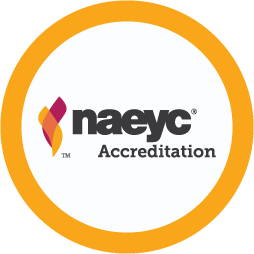Becoming Your Best: Building Professional Competencies

You are here
My career in early childhood education has been an unexpected adventure, giving me an expanded view of life outside the classroom. I have worked as a preschool teacher and most recently as a relationship implementation specialist for NAEYC’s Early Learning Programs. It has been my pleasure to help teachers have a voice in education policy and support high-quality programs for children.
While the primary focus of your job as a teacher is educating and caring for young children, there’s growing momentum for teachers to take charge of their profession. I’ve gathered the following be-your-best ideas for busy teachers regarding competencies, professionalism, and support from my time as a teacher, an advocate, and a trainer (and continuous learner!) working with programs from coast to coast.
1. Be Knowledgeable
While many teachers don’t focus on their program’s general employment policies—sick leave and vacation, coverage and break times, and health care benefits—these things directly impact how you practice in the field. For example, knowing that NAEYC calls for staff to have planning time built into the schedule, as opposed to the common expectation that teachers will do this work in their personal time, can help you advocate for work-life balance. Make sure you understand policy implications and participate in staff meetings in which policies are reviewed. If you don’t know when the program policy reviews occur, ask for a schedule and to be included.
2. Be Self-Aware
In a typical office job, you can step away for a coffee break if you feel stressed, but the pressures of coverage and teacher-to-child ratios can quickly make a teacher feel overwhelmed. Take time for your mental health and ask for breaks away from the classroom when needed. You’ll be a better teacher for the children when you’re at your best.
 3. Be Vocal
3. Be Vocal
Working at an advocacy organization in Washington, DC, I saw that classroom teachers had the greatest impact when they addressed issues like teacher salaries or class size from their unique perspectives and experiences. I became much more passionate about speaking for the field when I found that leaders listened to the real-life challenges I had faced in my classroom. I also saw how many opportunities to influence policy we miss by not speaking up. You know (and research demonstrates) how crucial your role with children is, so find ways to advocate for the importance of early childhood education and increase support at local, state, and federal levels. It can be as simple as posting on social media about your work or having the children in your classroom draw and write messages to mail to your representatives!
4. Be Ethical
Part of what defines a profession is having a set of ethical guidelines for practice. Doing what is right for children starts with agreed-upon guidelines for interactions in your classroom, with your fellow educators, and with the families you serve. When I was working in an infant classroom, we focused on partnering with families to understand their specific preferences for their child’s feeding, napping, emotional support, and more. I used NAEYC’s code of ethics to guide me as I developed relationships with families. It reminded me that it’s important “to acknowledge families’ childrearing values and their right to make decisions for their children,” especially when I felt tension between meeting the needs of an individual child and supporting all the children in my care.
5. Be Educated
While a degree alone does not make a high-quality teacher, it’s important to have knowledge of child development. For example, through studying child psychology I’ve learned that toddlers act out, such as by biting, because of some sort of emotional trigger. Biting is a way to communicate distress, so instead of punishing the child, it’s important to figure out the action or situation that causes the biting—strategies I’ve learned through child development coursework. Even if college seems out of reach, start by taking a course or even attending a single lecture at a local college. You’ll support the children better in their learning by being a lifelong learner yourself.
6. Be Passionate
An easy way to start your own higher education or professional development path is to find what motivates you to teach. For me, it was American Sign Language (ASL), which became a core part of my teaching practice. In college I minored in communication disorders, which is how I learned ASL. From there, I used it with infants and toddlers. Whether or not the children had diagnosed needs, ASL helped the children communicate better, which decreased their frustration when communicating needs to adults and interacting with peers. Find classes you enjoy—children’s literature, STEM, or even puppetry—that you can put directly into practice to make your learning useful and fun!
7. Be Mentored
Aside from deepening your knowledge, gaining experience is a large part of becoming a successful teacher. I was blessed throughout my career to have mentors to guide me and inspire me to be my best. My first mentor in the field—who continues to support my career today—challenged me to leave my comfort in the classroom and use my voice to become a full-time policy advocate. Invest in yourself by learning from experienced members of the profession so you can continue to develop our field.
8. Be Accountable
Take charge of your professional development. Your program’s leaders should be providing you access to curriculum materials and professional development opportunities. If they aren’t, take it upon yourself to find learning opportunities that inspire you. I am passionate about child-driven lesson planning, so I sought out articles, books, online sessions, and conferences—anything I could get my hands on—so I could learn more and share with my colleagues. Many conferences offer great scholarships to make attending affordable!
9. Be Equitable
I’m extremely grateful that I learned early in my career the importance of connecting with families to understand their preferences and beliefs before making judgments about how a child was behaving. This framed my understanding of cultural differences and gave me a strong foundation for educating children equitably. For example, my colleagues and I had a few children in class who struggled to settle at nap time. This was frustrating for us—as most programs do, we used nap time for planning and meetings. The children would not settle, wanted individual attention from their primary teachers, and quite often were exhausted (and fussy!) by the end of the day because they did not have a nap. Before frustrations could escalate, we took the time to discuss this challenge with the families. They explained that following their cultural practices, the children never slept alone—which explained why the children wouldn’t settle when staff moved away from them. We learned to recognize their cultural practices and planned for an extra staff member at nap time to stay near those children so the teachers could still use that time and the children would have that period to rest.
Core Competencies for the Profession
The Professional Standards and Competencies for Early Childhood Educators was released in March 2020 in conjunction with the Unifying Framework for the Early Childhood Education Profession. The Unifying Framework designates these professional standards and competencies as the core expectations for what early childhood educators should know and do to effectively promote young children’s learning and development. Based on the NAEYC 2009 position statement, standards and competencies were revised by a workgroup that included practitioners, subject matter experts, higher education faculty, and researchers. They incorporated feedback from two rounds of public comment from surveys, focus groups, conference sessions, letters from organizations and individuals, and many other avenues. Thousands of individuals in the early childhood field from across the United States engaged in this process! The resulting Professional Standards and Competencies is intended to guide the early childhood profession’s professional preparation programs, professional development systems, licensing expectations for practitioners, and professional early childhood education accrediting bodies.
To access the Professional Standards and Competencies for Early Childhood Educators, visit our position statements page.
 Standard 6: Staff Competencies, Preparation, & Support
Standard 6: Staff Competencies, Preparation, & Support
This article supports the following Accreditation topic area within Standard 6
6B: Professional Identity and Recognition
Photographs: © Getty Images
Copyright © 2021 by the National Association for the Education of Young Children. See permissions and reprints online at NAEYC.org/resources/permissions.
Meghann Hickey is a former relationship implementation specialist in NAEYC’s Division of Early Learning Systems. She also worked for the Early Care and Education Consortium in Washington, DC, and as an infant through prekindergarten teacher in Massachusetts.